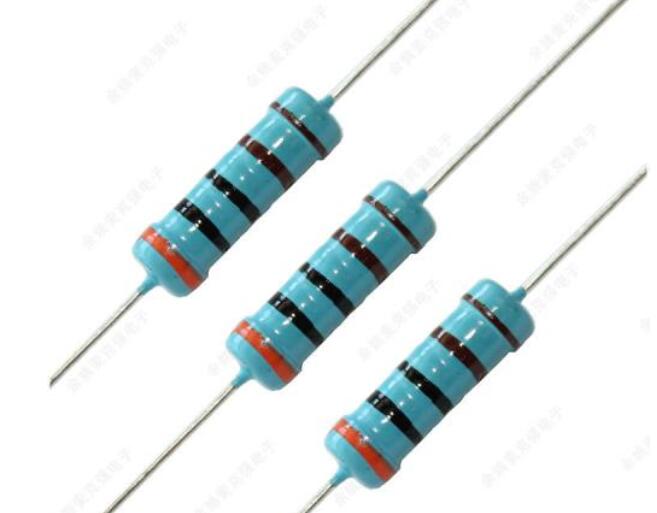What are the colors of color ring resistors and what do they represent
Different colors represent different numbers, as follows:
Brown 1 red 2 orange 3 yellow 4 green 5 blue 6 purple 7 gray 8 white 9 black 0, gold and silver indicate error
Color ring resistors are divided into four-color rings and five color rings
The meaning of each colored ring is as follows:
The first color ring: the first digit of the resistance value;
The second color ring: the second digit of the resistance value;
The third color ring: a power of 10;
The fourth color ring: error representation.
For example: Resistance color ring: brown green red gold, first digit: 1; Second place: 5; Third place: 10 is a power of 2 (i.e. 100); The error is 5%; The resistance value is: 15 × 100=1500 ohms=1.5 kiloohms=1.5K
There is also a more accurate "five color ring" resistor, which uses five color rings to represent the resistance value of the resistor, as follows:
The first color ring: the first digit of the resistance value;
The second color ring: the second digit of the resistance value;
The third color ring: the third digit of the resistance value;
The fourth color ring: the power of 10 of the resistance multiplier;
Article 5 Color Ring: Error (commonly brown, with an error of 1%)
Some five color ring resistors have colored rings on both ends of the metal cap. The color ring far away from the relatively concentrated four color rings represents the error, which is the fifth color ring. The corresponding color ring on the other end of the metal cap is the first color ring. When reading, the second and third color rings after it are the second highest and second highest positions. The fourth ring represents the power of 10. For example, if the resistance order of a resistor's color ring is: red (2) - black (0) - black brown, then it represents the resistance value of the resistor: 200 × 100 Ω. For example, brown black red brown represents a resistance value of 100 × 102 Ω=10000 Ω=10K Ω. It can be seen that the resistance error of a four-color ring is 5-10%, while that of a five color ring is usually 1%, resulting in improved accuracy.
For example, there is a resistor: yellow, purple, red, orange, brown. The first three digits are 472, and the fourth digit represents 10 to the power of 3, which is 1000. The resistance value is 472 × 1000 ohms=472 kiloohms (472K)
Overall, as long as the gold and silver rings are at the end, that's enough.

The quality of an integrated circuit (IC) can be evaluated by testing key parameters such as pin resistance, pin voltage, and pin waveforms. Among these, pin re...
A typical photodiode model contains the following key elements: a diode in parallel with a current source, where the current source is proportional to light int...
These two electronic components are commonly encountered in various circuits. For example, Field-Effect Transistors (FETs) are widely used as:Switching osci...
For polarized capacitors such as electrolytic and tantalum capacitors, reverse installation is strictly prohibited. Powering such incorrectly installed capacito...
Capacitors, being fundamental passive components, primarily serve the following purposes in electronic circuits:Power Circuit Applications:Capacitors perf...
Capacitor Testing Using an Analog MultimeterTypically, the R10, R100, and R1K ranges on an analog multimeter are used for capacitor testing. Follow this ...
Copyright © 2012-2025 ZHW HIGH-TECH (HK) Company Limited